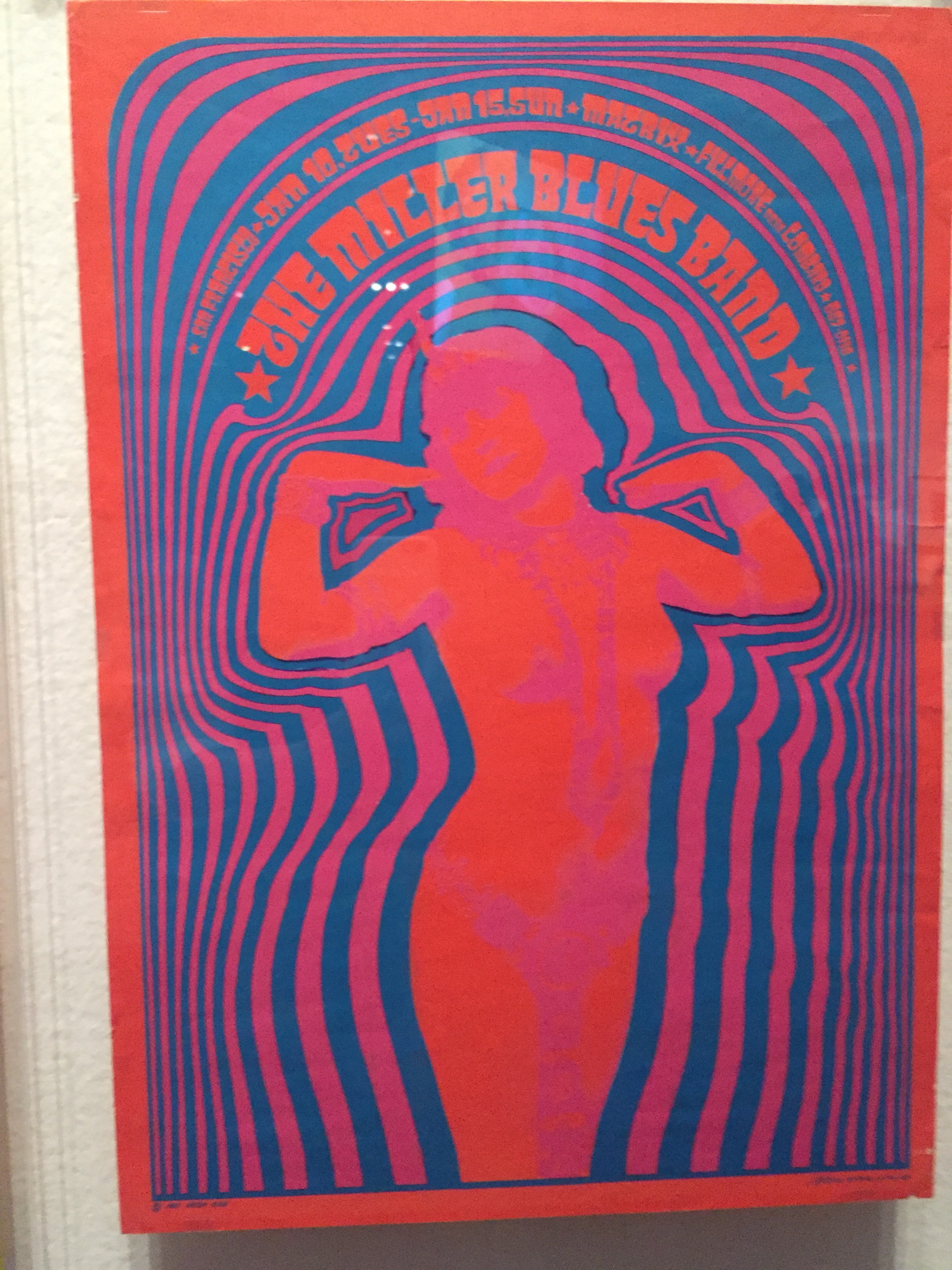Can you believe the Summer of Love was already 50 years ago?
The de Young Museum in Golden Gate Park is hosting a special exhibit to celebrate the summer of 1967. So much history in SF that summer!
My friend Brooke & I headed to the museum and learned a lot.
In 1967, San Francisco's Golden Gate Park and Haight-Ashbury district filled with 100,000 youth who sought connection with music and with like minded people. Their enthusiasm for social and political change spilled into the city. The counterculture in SF in the 60's was special because it was not just about politics. It was also about art, led by poets, artists, designers, musicians & performers.
acid use
Acid (LSD) was legal back in those days and was a shining star in SF the summer of '67. A group of friends called the Merry Pranksters conducted informal "acid tests" designed to spread knowledge of the drug. Almost a play on the government experiments with LSD. The largest of these was a three day event called the Trips Festival in 1966. Imagine walking into this party. You grab some punch and start dancing. You later realize the punch has been spiked with LSD. You dance along with the other 10,000 attendees, listen to Grateful Dead, and watch Ben Van Meter's triple exposed film.
Notice the first black & white poster below. It was one of the first attempts to use visual optics to foreshadow the energy and experience you will feel at this psychedelic event.
fashion
Several fashion trends to enjoy. Let's start with global influence. In 1961, President Kennedy started the Peace Corps. In the late 60's, young vibrant people were returning from their global travels with a new fashion sense. Yes, the Peace Corps actually impacted fashion.
You will also notice the influence of Native American dress.
denim
Denim played an important role during this period. You may not know that Levi's is based in San Francisco. Mr. Levi created blue jeans in 1873. For the counterculture movement of the 60's, Levi's were perfect. They were durable, cheap, and were a break away from the traditional clothes of the 50's which were much more formal. Levi's were originally for miners, cowboys, and agricultural workers. In the 60's they transitioned to the working class and to those who rejected middle-class values.
Demin got creative as people started to customize their jeans. Whether they painted or added fringe, unique denim was the way to go.
bell bottoms
Guess what else was invented right here in San Francisco.....bell bottoms. These came about when the youth in the Haight were trying to wear the traditional Levi's over their boots. It just wasn't working. Enter a very clever girl, Peggy Caserta. People came to Peggy's boutique to have the legs of their jeans widened. She cut the seams and sewed in extra fabric so that the jeans would comfortably fit over the cowboy boots. She had so many requests for this look, that she went straight to the Levi's factory and asked for a custom order for her shop. Boom-bell bottoms are born.
music posters
One of my favorite parts of the exhibit was all the colorful music posters. If you've been to the Fillmore or if you've been to the movie room in my house, you will recognize these posters.
The poster artists came up with a unique point of view. Not surprising, they broke rules of conventional design. Wes Wilson created the style of fluid lettering carved out of negative space.
Below, the red letters on the blue background almost creates a vibration. It is not easy to read, on purpose. The artist wanted people to stop, stare, and engage with the poster.
Another well known poster artists was Victor Moscoso, who studied at Yale University under Josef Albers. Moscoso perfected Wes Wilson’s technique of combining complementary colors to create a popping effect, making it difficult for the eye to focus.
Look at some of the women below-they are wearing clothes that have a 1920's flapper feel.
My two favorite rooms in the exhibit were the room with the concert posters as wallpaper-bright colors and patterns all around. And the bean bag room with swirling images on the wall.


































